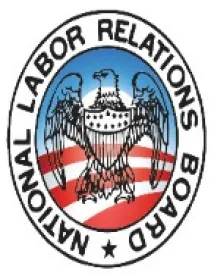At the urging of the National Labor Relations Board’s General Counsel and the Communications Workers of America, AFL-CIO (“CWA”), the Board may be reconsidering whether workers should have a right to use employer e-mail and electronic communications systems during union organizing and other activities protected by federal labor law.
Under the National Labor Relations Act, employers are allowed to forbid employees from using company e-mail and other electronic communications systems for all non-business purposes. Current Board decisions provide that such a blanket prohibition, which includes a prohibition on using these systems for purposes of Section 7 of the Act (i.e., union and other protected concerted activity), is lawful as “employees have no statutory right to use the[ir] Employer’s e-mail system for Section 7 purposes.” Register Guard, 351 NLRB 1110 (2007), enforced in relevant part and remanded sub nom. Guard Publishing v. NLRB, 571 F.3d 53 (D.C. Cir. 2009). However, the NLRB’s General Counsel and the Communications Workers of America, AFL-CIO argue such limitations should be held unlawful. They are asking the NLRB to overturn Register Guard and grant employees the right to use company e-mail to engage in union and other protected concerted activities, such as trying to drum up support for a union or encourage employees to protest certain working conditions.
The case providing them with the vehicle for this move is Purple Communications, Inc., JD-75-13 (Bogas, ALJ, Oct. 24, 2013). There, the CWA alleged the employer’s rule prohibiting employees from using its equipment for non-business purposes unlawfully interfered with employees’ rights. Without referring specifically to Register Guard, the Administrative Law Judge summarily dismissed the allegation, stating such a rule “is not, under current Board law, considered an improper infringement on Section 7 rights.”
The GC and CWA have excepted to the Judge’s ruling. They have asked the Board to overrule Register Guard. The GC has further requested the Board to adopt a new standard under which “employees who are permitted to use their employer’s email for work purposes [would] have the right to use it for Section 7 activity, subject only to the need to maintain production and discipline.”
The General Counsel broadly asserted that a rule that “prohibit[s] employees from using Respondent’s equipment to engage in Section 7 activities such as organizing support for, or opposition to, a labor organization; or discussing, or attempting to discuss, workplace concerns with fellow workers” violates the NLRA. According to the GC, technology has made “email … analogous to the water cooler” of years ago, around which employees would gather to talk about their personal and work issues. He asserted:
Employees have a Section 7 right to communicate at work, and, in technological workplaces, email is the present day water cooler. In the last 10-plus years, the emergence and widespread use of email has transformed the manner in which many employees interact in the workplace. In many workplaces, technology has replaced face-to-face communication in a break room, cafeteria, or other traditional gathering places as the preferred method of communication. As employees increasingly use email as a primary mode of communication, email has, thus, become the “natural gathering place” for non-work-related communication.
The NLRB is considering the GC’s exceptions and proposed rule, and, in a move that many say signals the Board likely will be making a major policy shift, has invited briefs from the parties and interested amici on five questions:
1. Should the Board reconsider its conclusion in Register Guard that employees do not have a statutory right to use their employer’s e-mail system (or other electronic communications systems) for Section 7 purposes?
2. If the Board overrules Register Guard, what standard(s) of employee access to the employer’s electronic communications systems should be established? What restrictions, if any, may an employer place on such access, and what factors are relevant to such restrictions?
3. In deciding the above questions, to what extent and how should the impact on the employer of employees’ use of an employer’s electronic communications technology affect the issue?
4. Do employee personal electronic devices (e.g., phones and tablets), social media accounts, and/or personal e-mail accounts affect the proper balance to be struck between employers’ rights and employees’ Section 7 rights to communicate about work-related matters? If so, how?
5. Identify any other technological issues concerning e-mail or other electronic communications systems that the Board should consider in answering the foregoing questions, including any relevant changes that may have occurred in electronic communications technology since Register Guard was decided. How should these affect the Board’s decision?
The Board’s ruling in this case could affect dramatically all employers utilizing electronic communications systems (and a great many do, regardless of whether their employees are unionized or not). If the Union’s and the GC’s position inPurple Communications is adopted, many employers likely will have to revise handbook rules and other policies that prohibit employees from using electronic communications systems for non-business purposes to allow for access. Furthermore, employers probably would not be able to stop employees from using employer electronic communications systems to engage in Section 7 activities while on non-work time, unless such use interfered with the “need to maintain production and discipline,” which the employer would have the burden – likely a heavy one – of proving.





 />i
/>i

